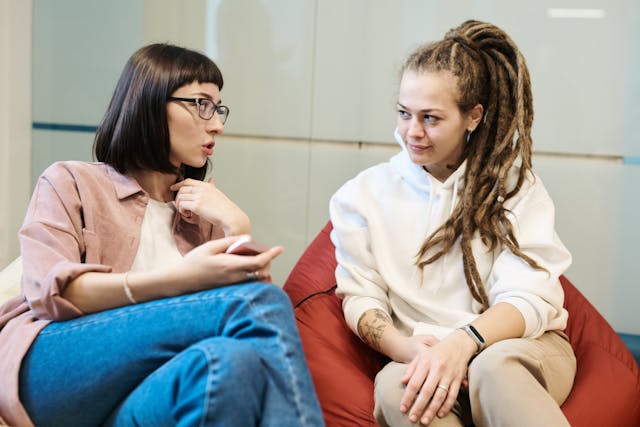Key Learning Points: The GROW Coaching Model is one of the simplest and most well known coaching models. It’s a solution focused model and the letters stand for: Goals, Reality, Options and Will (or Wrap-Up). This easy model is a great starting point for new coaches.
The GROW Coaching Model
The GROW model, which stands for Goals, Reality, Options and Will. It is one of the easiest coaching models to use and to remember. Its simplicity also makes it a great model for those who are new to coaching to use.
At its core, all the GROW model is really doing is getting someone to think about their current state, their desired future, and how they can bridge the gap between the two. This approach forms the basis for several other coaching models (e.g. the ACHIEVE model) and problem solving approaches (e.g. the A3 Problem Solving Model.)
To use the GROW Coaching Model, simply walk through its stages in a conversation with the person you are looking to coach. Make sure that you ask effective questions at each stage to help your coachee get the most benefit from the conversation.
Goal
The first stage of the GROW Coaching Model is to help your coachee think about how they’d like things to be in the future. This is done by helping express what their desired goal is. This stage may involve some exploration and refinement to help the coachee gain clarity over what they really want to achieve.
As a coach you should ask exploratory and refining, future focused questions at this stage. You should aim to help your coachee identify a goal that is stretching enough to be rewarding, but also achievable enough to be motivating (See Types of Goals).
Questions you might want to ask as a coach could include:
- What do you want to achieve?
- What are your objectives?
- How will you measure your objectives?
- How much progress do you wish to make?
- When would you like to have solved this problem?
- Are there smaller steps you’d like to work on?
- What will it feel like when you reach your goal?
- How will you explain what you’ve achieved to others once you’ve reached your goal?
Reality
Once someone has developed a clear picture of where they wish to be, it’s time to help them gain a clear view of their current state. This stage involves exploratory and rounded thinking and questioning.
People aren’t always good at objectively perceiving reality, as demonstrated by our cognitive biases. As a coach, you should use this stage to help your coachee develop a truly honest and comprehensive view of exactly where they are at the moment. This may involve asking them to broaden their thinking, consider feedback they’ve received in the past or to assess objective evidence.
Questions you might want to ask as a coach could include:
- What is the current state?
- What’s your current position?
- What feedback have you had in relation to this?
- What evidence have you received in relation to the current situation?
- Who else is involved?
- How would your peers describe your situation?
Options
The first two stages of the GROW Coaching Model help individuals understand both where they want to be and where they currently are. As a result, they also understand the gap that they need to bridge to reach their goals.
The third stage of the GROW model helps coachees think about exactly how they can bridge the gap between their current state and their desired future state.
As a coach, your role in this stage is to help your coachee think creatively, comprehensively and positively about the many different things they could do to achieve their goals. There are no wrong answers at this stage, it’s all about generating many options and becoming enthused by them at the same time.
Questions you might want to ask as a coach could include:
- What options do you have?
- How can you achieve your goals?
- What other ways could you achieve your goals?
- Who could help you achieve your goals?
- What skills do you have to help you achieve your goals?
- How else could you do to achieve your goals?
- What would your friends / peers / manager / partner / parent / child suggest you do to achieve your goals?
Will
The final stage of the GROW Coaching Model is designed to help a coachee identify a specific set of actions, and to commit to them. The act of refining from their options helps them visualize the specific steps they will take towards achieving their goals, which increases the probably they will actually do those actions. Similarly, voicing their actions and committing to them in a conversation with a coach also increases the probability they will do them.
As a coach your role at this stage is to help your coachee obtain real clarity over what their specific future steps will be and to help them commit to these actions.
Questions you might want to ask as a coach could include:
- Given your options, what will you do next?
- What specific steps will you take?
- When will you take them?
- What will it feel like?
- How will you make sure you start the process?
- Who will you tell about this?
- What will you say to me about this next time we meet?
- What’s the first thing you need to do?
- How will you celebrate your success along the way?
Our View
In our view, is that the GROW coaching model is an excellent model for new, work-place coaches to start with. It’s easy to use and effective at helping coachees explore their situations and find and own their own solutions.
Its four stages are easily remembered and the questions needed to coach an individual through them are straight forward. It also produces clear outcomes or agreed actions that can be returned to in subsequent coaching sessions.
When using it, just remember that as a coach you’re not providing solutions, you’re helping your coachee find their own solutions. It’s often tempting to provide solutions, particularly to more junior colleagues, but it’s important that they explore their own situation and fully own their decisions and actions.
We recommend that any new or aspiring line manager who is not experienced at coaching starts to use this model in the workplace and develops their coaching skills through it. It will yield results, help develop your coaching style, help you practice active listening and insightful questioning and help you get to know your team.
As with all coaching models, it’s possible to walk yourself through the stages of the GROW coaching model on your own. Results are generally better with a coach, but it’s still possible to make considerable progress towards your goals without one if you follow this approach.
How We Help Organizations
We provide leadership development programmes and consulting services to clients around the world to help them become high performing organizations that are great places to work. We receive great feedback, build meaningful and lasting relationships and provide reduced cost services where price is a barrier.
Learning more about who we are and what we do it easy: To hear from us, please join our mailing list. To ask about how we can help you or your organization, please contact us. To explore topics we care about, listen to our podcast. To attend a free seminar, please check out our eventbrite page.
We’re also considering creating a community for people interested in improving the world of work. If you’d like to be part of it, please contact us.
Sources and Feedback
This post is based on original work of Sir John Whitmore, and his collaborators. You can read more in his book: “Coaching For Performance: Growing People, Performance and Purpose”. Whitmore, J. (2009) Coaching for Performance: Growing Human Potential and Purpose—The Principles and Practice of Coaching and Leadership. 4th Edition, Nicholas Brealey Publishing, London.
We’re a small organization who know we make mistakes and want to improve them. Please contact us with any feedback you have on this post. We’ll usually reply within 72 hours.






